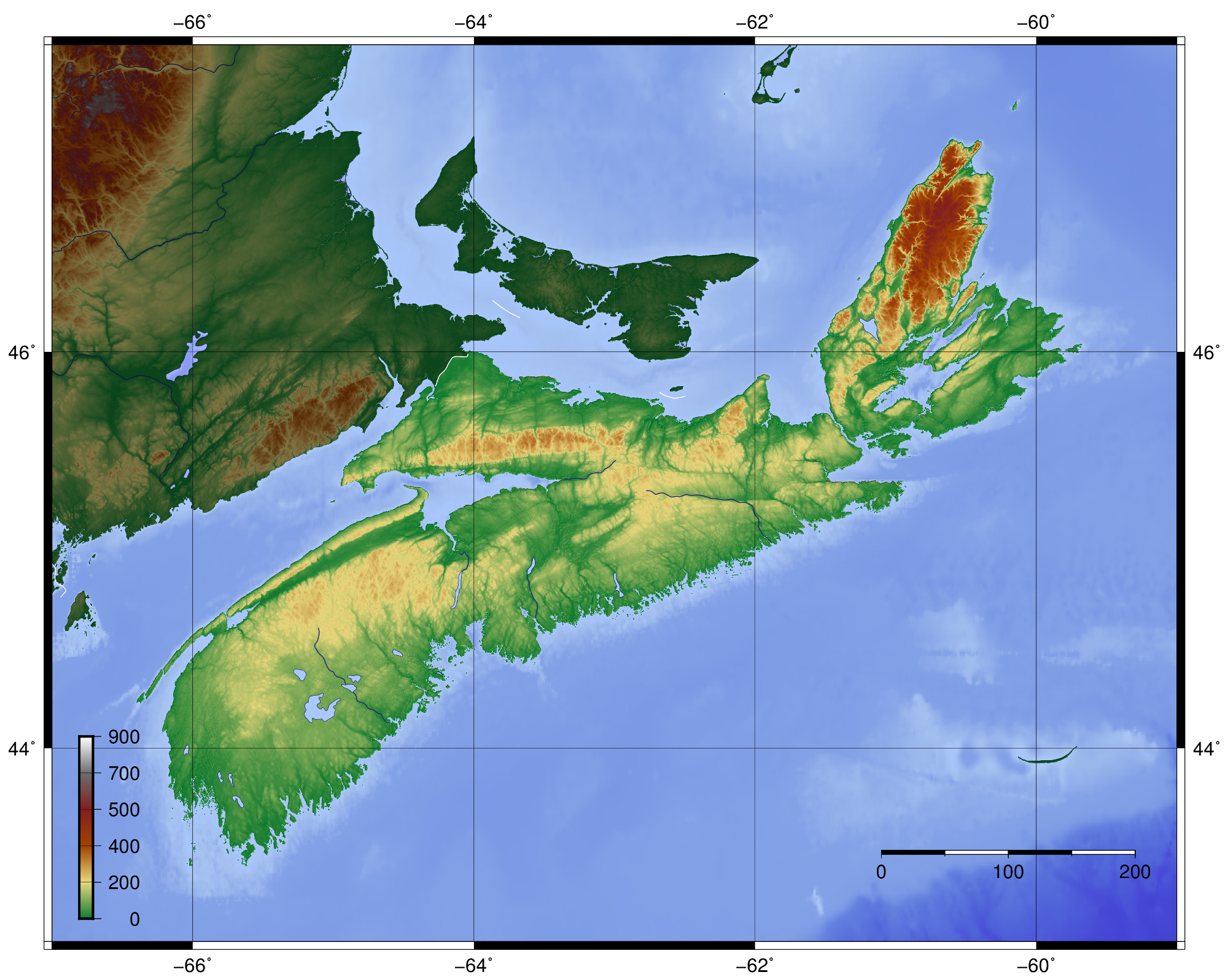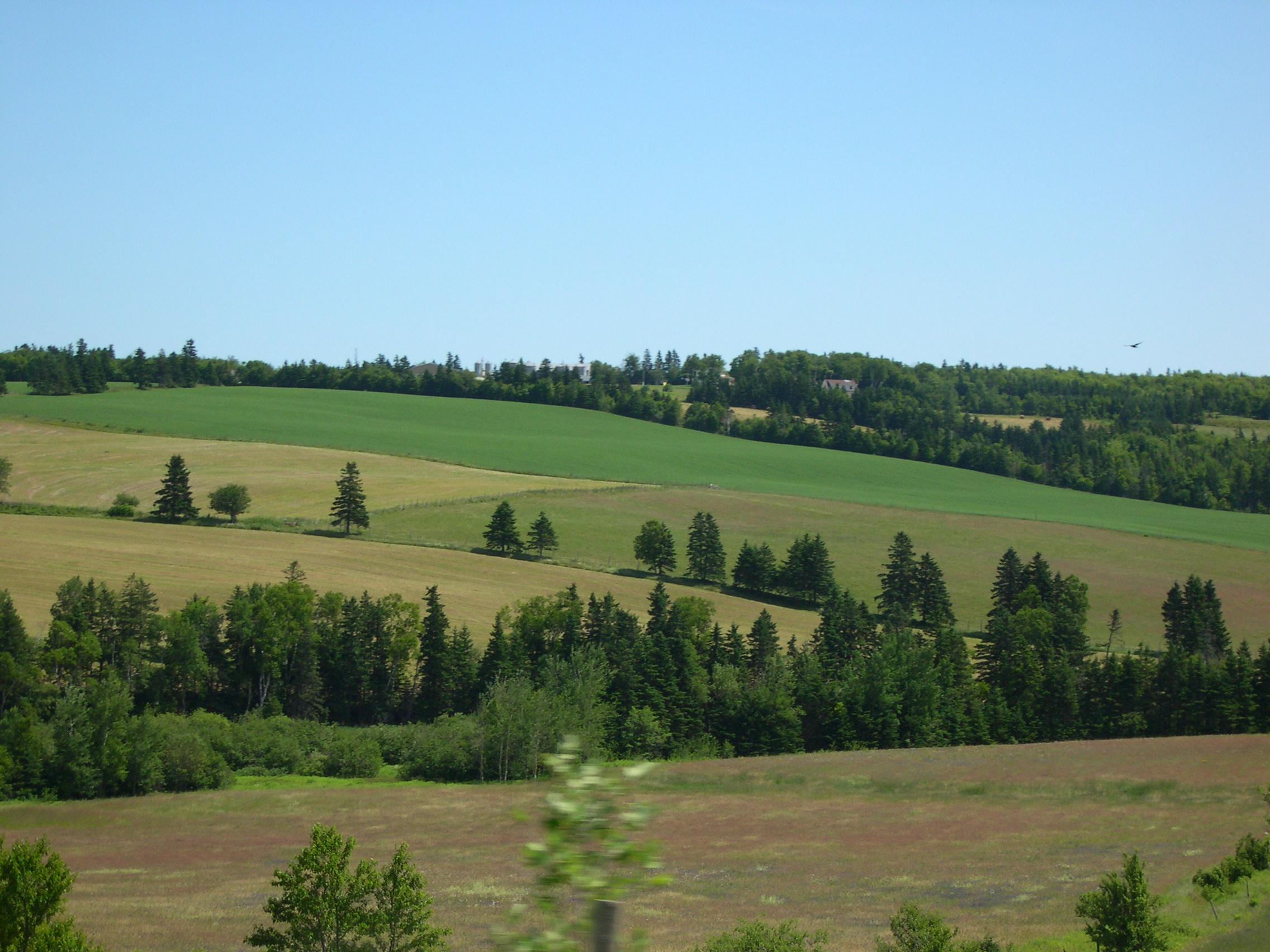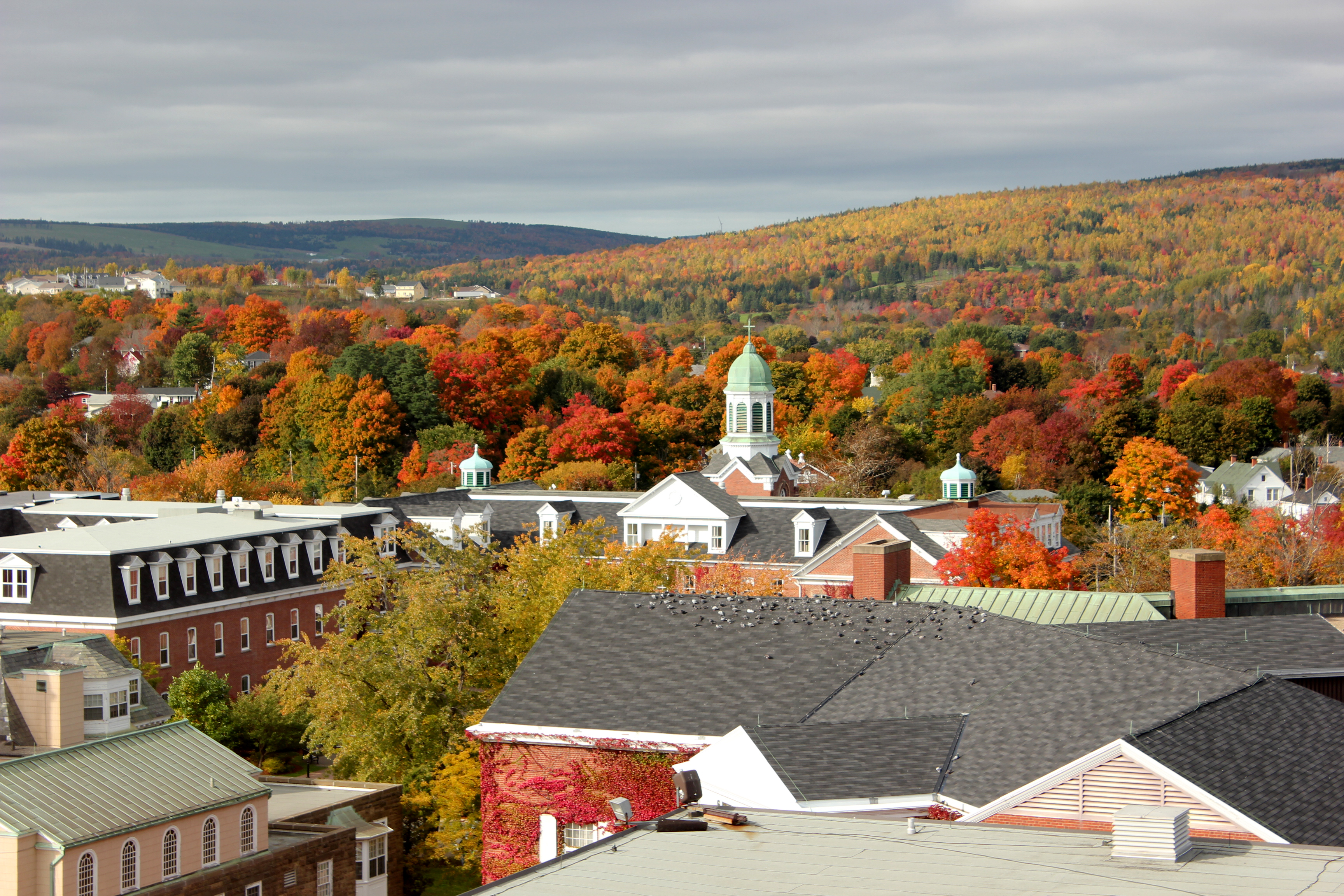|
Appalachian Uplands
The Appalachian Uplands is a physiographic region in Canada. It is one of seven physiographic regions in Canada distinguished by its topography and geology. The region includes southern Quebec, Gaspésie, New Brunswick, Nova Scotia, Prince Edward Island and the island of Newfoundland. Physiographic regions and divisions Each physiographic region, subregion and division has its own subregions and divisions—distinguished by topography and geology. Distinctive features Features include Gros Morne National Park and the Newfoundland Highlands in Newfoundland, the Cobequid Mountains, Antigonish Highlands, Cape Breton Highlands The Cape Breton Highlands (french: Plateau du Cap-Breton, gd, Àrd-thalamh Cheap Bhreatainn), commonly called the Highlands, refer to a highland or mountainous plateau across the northern part of Cape Breton Island in the Canadian province of N ..., Nova Scotia Uplands, and the Annapolis Lowlands in Nova Scotia, the New Brunswick Highlands, Notre-Da ... [...More Info...] [...Related Items...] OR: [Wikipedia] [Google] [Baidu] |
Physiographic Regions Of The World
Physiographic regions of the world are a means of defining Earth's landforms into distinct regions, based upon the classic three-tiered approach by Nevin M. Fenneman in 1916, that separates landforms into physiographic divisions, physiographic provinces, and physiographic sections. Originally used in North America, the model became the basis for similar classifications of other continents, and was still considered valid . Physiography During the early 1900s, the study of regional-scale geomorphology was termed "physiography". Physiography later was considered to be a contraction of "''physi''cal" and "ge''ography''", and therefore synonymous with physical geography, and the concept became embroiled in controversy surrounding the appropriate concerns of that discipline. Some geomorphologists held to a geological basis for physiography and emphasized a concept of physiographic regions while a conflicting trend among geographers was to equate physiography with "pure morphology," s ... [...More Info...] [...Related Items...] OR: [Wikipedia] [Google] [Baidu] |
New Brunswick
New Brunswick (french: Nouveau-Brunswick, , locally ) is one of the thirteen Provinces and territories of Canada, provinces and territories of Canada. It is one of the three Maritime Canada, Maritime provinces and one of the four Atlantic Canada, Atlantic provinces. It is the only province with both Canadian English, English and Canadian French, French as its official languages. New Brunswick is bordered by Quebec to the north, Nova Scotia to the east, the Gulf of Saint Lawrence to the northeast, the Bay of Fundy to the southeast, and the U.S. state of Maine to the west. New Brunswick is about 83% forested and its northern half is occupied by the Appalachians. The province's climate is continental climate, continental with snowy winters and temperate summers. New Brunswick has a surface area of and 775,610 inhabitants (2021 census). Atypically for Canada, only about half of the population lives in urban areas. New Brunswick's largest cities are Moncton and Saint John, New Brun ... [...More Info...] [...Related Items...] OR: [Wikipedia] [Google] [Baidu] |
Nova Scotia
Nova Scotia ( ; ; ) is one of the thirteen provinces and territories of Canada. It is one of the three Maritime provinces and one of the four Atlantic provinces. Nova Scotia is Latin for "New Scotland". Most of the population are native English-speakers, and the province's population is 969,383 according to the 2021 Census. It is the most populous of Canada's Atlantic provinces. It is the country's second-most densely populated province and second-smallest province by area, both after Prince Edward Island. Its area of includes Cape Breton Island and 3,800 other coastal islands. The Nova Scotia peninsula is connected to the rest of North America by the Isthmus of Chignecto, on which the province's land border with New Brunswick is located. The province borders the Bay of Fundy and Gulf of Maine to the west and the Atlantic Ocean to the south and east, and is separated from Prince Edward Island and the island of Newfoundland (island), Newfoundland by the Northumberland Stra ... [...More Info...] [...Related Items...] OR: [Wikipedia] [Google] [Baidu] |
Prince Edward Island
Prince Edward Island (PEI; ) is one of the thirteen provinces and territories of Canada. It is the smallest province in terms of land area and population, but the most densely populated. The island has several nicknames: "Garden of the Gulf", "Birthplace of Confederation" and "Cradle of Confederation". Its capital and largest city is Charlottetown. It is one of the three Maritime provinces and one of the four Atlantic provinces. Part of the traditional lands of the Miꞌkmaq, it was colonized by the French in 1604 as part of the colony of Acadia. The island was ceded to the British at the conclusion of the French and Indian War in 1763 and became part of the colony of Nova Scotia, and in 1769 the island became its own British colony. Prince Edward Island hosted the Charlottetown Conference in 1864 to discuss a union of the Maritime provinces; however, the conference became the first in a series of meetings which led to Canadian Confederation in 1867. Prince Edward Island ... [...More Info...] [...Related Items...] OR: [Wikipedia] [Google] [Baidu] |
Newfoundland
Newfoundland and Labrador (; french: Terre-Neuve-et-Labrador; frequently abbreviated as NL) is the easternmost province of Canada, in the country's Atlantic region. The province comprises the island of Newfoundland and the continental region of Labrador, having a total size of 405,212 square kilometres (156,500 sq mi). In 2021, the population of Newfoundland and Labrador was estimated to be 521,758. The island of Newfoundland (and its smaller neighbouring islands) is home to around 94 per cent of the province's population, with more than half residing in the Avalon Peninsula. Labrador borders the province of Quebec, and the French overseas collectivity of Saint Pierre and Miquelon lies about 20 km west of the Burin Peninsula. According to the 2016 census, 97.0 per cent of residents reported English as their native language, making Newfoundland and Labrador Canada's most linguistically homogeneous province. A majority of the population is descended from English and Irish ... [...More Info...] [...Related Items...] OR: [Wikipedia] [Google] [Baidu] |
Gros Morne National Park
Gros Morne National Park is a Canadian national park and World Heritage Site located on the west coast of Newfoundland. At , it is the second largest national park in Atlantic Canada after Torngat Mountains National Park, which has an area of . The park takes its name from Newfoundland's second-highest mountain peak (at ) located within the park. Its French meaning is "large mountain standing alone," or more literally "great sombre." Gros Morne is a member of the Long Range Mountains, an outlying range of the Appalachian Mountains, stretching the length of the island's west coast. It is the eroded remnants of a mountain range formed 1.2 billion years ago. In 1987, the park was awarded World Heritage Site status by UNESCO because "The park provides a rare example of the process of continental drift, where deep ocean crust and the rocks of the earth's mantle lie exposed." The Gros Morne National Park Reserve was established in 1973, and was made a national park on Octob ... [...More Info...] [...Related Items...] OR: [Wikipedia] [Google] [Baidu] |
Cobequid Mountains
The Cobequid Mountains, also sometimes referred to as the Cobequid Hills, is a Canadian mountain range located in Nova Scotia in the mainland portion of the province. Geologic history Geologically, the Cobequid Mountains are considered part of the Appalachians. The range stretches from Cape Chignecto in Cumberland County in the west through to Pictou County in the east. The Cobequid Mountains trace their geologic history to the Precambrian and Devonian ages; consequently the mountains are composed of a combination of sediments, granites, and volcanic rock all of which has been crushed and folded by continental drift when this part of Nova Scotia was located at the centre of the Pangea supercontinent. Subsequent erosion over millions of years has resulted in the present-day low range of mountains and rolling hills. The part of northern Nova Scotia which contains the Cobequid Mountains is believed to have been linked with what is now northern Europe. Its collision with a section ... [...More Info...] [...Related Items...] OR: [Wikipedia] [Google] [Baidu] |
Antigonish Highlands
, settlement_type = Town , image_skyline = File:St Ninian's Cathedral Antigonish Spring.jpg , image_caption = St. Ninian's Cathedral , image_flag = Flag of Antigonish.png , image_seal = Antigonish NS seal.png , seal_size = 100x90px , image_shield = Antigonish ns crest.jpg , shield_size = 100x90px , pushpin_map = Nova Scotia , pushpin_label_position = top , pushpin_map_caption = Location of Antigonish in Nova Scotia , coordinates = , subdivision_type = Country , subdivision_name = Canada , subdivision_type1 = Province , subdivision_type2 = County , subdivision_type3 = , subdivision_name1 = Nova Scotia , subdivision_name2 = Antigonish County , subdivis ... [...More Info...] [...Related Items...] OR: [Wikipedia] [Google] [Baidu] |
Cape Breton Highlands
The Cape Breton Highlands (french: Plateau du Cap-Breton, gd, Àrd-thalamh Cheap Bhreatainn), commonly called the Highlands, refer to a highland or mountainous plateau across the northern part of Cape Breton Island in the Canadian province of Nova Scotia. Considered an extension of the Appalachian mountain chain, the Highlands comprise the northern portions of Inverness and Victoria counties. The Highlands are surrounded by water with the Atlantic Ocean on the east, the Cabot Strait to the north and east, the Gulf of St. Lawrence on the north and west, and Bras d'Or Lake to the south. Elevations average 350 metres at the edges of the plateau (i.e. at the above-mentioned water bodies), and rise to more than 500 metres at the centre, including the highest elevation point in the province at White Hill, at 533 metres. The plateau consists of numerous broad, gently rolling hills bisected with deep valleys and steep-walled river canyons. The southern and western edges of the ... [...More Info...] [...Related Items...] OR: [Wikipedia] [Google] [Baidu] |
Nova Scotia Uplands
A nova (plural novae or novas) is a transient astronomical event that causes the sudden appearance of a bright, apparently "new" star (hence the name "nova", which is Latin for "new") that slowly fades over weeks or months. Causes of the dramatic appearance of a nova vary, depending on the circumstances of the two progenitor stars. All observed novae involve white dwarfs in close binary systems. The main sub-classes of novae are classical novae, recurrent novae (RNe), and dwarf novae. They are all considered to be cataclysmic variable stars. Classical nova eruptions are the most common type. They are likely created in a close binary star system consisting of a white dwarf and either a main sequence, subgiant, or red giant star. When the orbital period falls in the range of several days to one day, the white dwarf is close enough to its companion star to start drawing accreted matter onto the surface of the white dwarf, which creates a dense but shallow atmosphere. This atmospher ... [...More Info...] [...Related Items...] OR: [Wikipedia] [Google] [Baidu] |
Annapolis Lowlands
Annapolis ( ) is the capital city of the U.S. state of Maryland and the county seat of, and only incorporated city in, Anne Arundel County. Situated on the Chesapeake Bay at the mouth of the Severn River, south of Baltimore and about east of Washington, D.C., Annapolis forms part of the Baltimore–Washington metropolitan area. The 2020 census recorded its population as 40,812, an increase of 6.3% since 2010. This city served as the seat of the Confederation Congress, formerly the Second Continental Congress, and temporary national capital of the United States in 1783–1784. At that time, General George Washington came before the body convened in the new Maryland State House and resigned his commission as commander of the Continental Army. A month later, the Congress ratified the Treaty of Paris of 1783, ending the American Revolutionary War, with Great Britain recognizing the independence of the United States. The city and state capitol was also the site of the 1786 ... [...More Info...] [...Related Items...] OR: [Wikipedia] [Google] [Baidu] |







